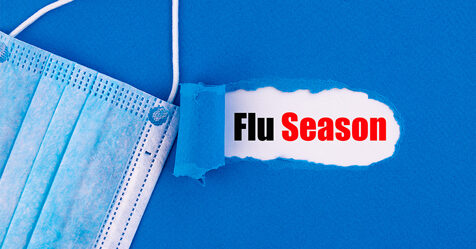Cleaning chemicals are intended to create environments that promote health and safety, but these products can also lead to unfortunate consequences. For example, toxic fumes from improperly mixed chemicals accidentally killed a Buffalo Wild Wings manager in 2019 when one employee cleaned the floor with a bleach-based chemical and then another applied an acid-based cleaner.
The safety of those who clean has become an even more important topic of discussion during the novel coronavirus pandemic. These individuals are being relied upon to clean frequently and thoroughly, sometimes without the proper personal protective equipment (PPE). Cleaning professionals may also be using new products with which they are unfamiliar. If used at the incorrect dilution, this can result in skin and eye irritation, like in the case of custodians responsible for cleaning corporate offices as coronavirus began to spread.
With so much at stake right now and new standards of cleanliness emerging, organizations need to prioritize the well-being of their front-line employees. As June is National Safety Month, it’s an opportune time to revisit ways to promote workplace safety.
Workplace safety offers direct and indirect benefits
Safe workplaces can help close the revolving door of worker turnover in the cleaning industry and related sectors like hospitality and foodservice. The cleaning industry has an extremely high turnover rate—estimates place it between 200 and 400%. High turnover makes it difficult to ensure that all employees are trained properly, especially on which chemicals to use, how to use them properly and which to avoid mixing.
If employers create a workplace culture that values worker safety and well-being, employees are more likely to stay in their roles longer. Extending job tenure can improve engagement and help reduce costs associated with hiring and training new workers.
Enhanced safety measures can also mean that fewer workers are injured on the job, which means less time away that requires employers to find temporary replacements or place additional work on other employees. It also results in fewer workers’ compensation claims, lawsuits, and U.S. Occupational Safety and Health Association (OSHA) fines. Organizations can also avoid the potential reputational fallout that results from high-profile accidents or even disgruntled employees sharing their experiences about lapses in safety.
Ways to enhance workplace safety
There are several workplace safety strategies for employers to consider:
1. Review your chemical inventory.
Take a close look at the products being used to clean. Weigh the pros and cons of products with longer contact times, such as 10 minutes, as a dwell time of this length can be difficult to achieve. Then, evaluate anything that may pose a potential risk to workers. With increased sensitivity around efficacy and safety, your facility may feel more comfortable using solutions that are gentle on surfaces and people, but tough on pathogens. Narrowing your inventory, while still retaining all of the products you deem essential, means there are fewer chemicals for employees to learn how to use.
2. Install equipment that enhances safety.
A chemical dispenser is one tool that promotes safety, and it is a better alternative to the traditional “glug-glug” method of mixing chemicals. Employees who rely on the manual method to dilute chemicals are directly exposed to potentially harmful chemicals.
Chemical dispensers help employees achieve the precise dilutions required for cleaning solutions to be most effective. Improperly mixed cleaning solutions can leave behind harmful viruses, bacteria, or fungi. Ineffective solutions also waste product as workers perform jobs over and over again, only to see the same unsatisfying results.
Consider dispensers with a user-friendly interface, advanced technology that can produce multiple dilutions and those that offer easy installation and maintenance. Locking capabilities also further enhance safety by preventing leaks and accidental exposure.
3. Conduct thorough employee training.
While switching to safer chemicals and using tools like chemical dispensers reduce risks associated with cleaning, it’s still important for employees to undergo training. For example, workers should understand which combinations of chemicals can be harmful and how to properly clean and then disinfect surfaces as part of a two-step cleaning process.
4. Promote a culture of safety.
All the training and education in the world won’t have an impact unless it’s conducted within a workplace culture that prioritizes safety. Managers who lead by example will secure top-to-bottom support from employees who emulate their behaviors. Even a small visual cue, like a sign in a custodial closet or breakroom, reminding employees to wear PPE emphasizes safety. Enforcing accountability and celebrating successes also help reinforce safety procedures.
A win-win for everyone
While many facilities are currently weighing how to keep patrons safe upon reopening, it’s also necessary to reassess workplace safety, especially for those who maintain these buildings. Organizations should start by reviewing the types of chemicals and tools being used to clean, sanitize and disinfect. It may be worthwhile to invest in equipment that can simplify and improve the cleaning process. Finally, training on best practices and promoting a culture of safety is key, as employees will be more confident in their capabilities when they understand the how, what, when, where and why of cleaning.



